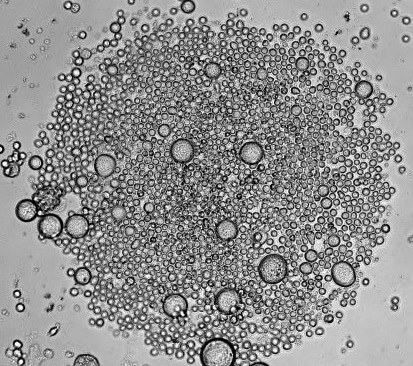 Mature blood cells are relatively short-lived, and require replenishment from multipotent HSCs. Thus, HSCs must self-renew to generate an adequate pool of HSCs, as well as differentiate to give rise to more mature blood cells. A balance between self-renewal and differentiation ensures that the hematopoietic system can be functionally sustained throughout the lifetime of an adult body. However, as HSCs age, they accumulate DNA damage, often compromising their functionality. DNA damage can be further propagated both to daughter stem cells and downstream lineages, and may increase the risk of developing blood disorders 1.
Mature blood cells are relatively short-lived, and require replenishment from multipotent HSCs. Thus, HSCs must self-renew to generate an adequate pool of HSCs, as well as differentiate to give rise to more mature blood cells. A balance between self-renewal and differentiation ensures that the hematopoietic system can be functionally sustained throughout the lifetime of an adult body. However, as HSCs age, they accumulate DNA damage, often compromising their functionality. DNA damage can be further propagated both to daughter stem cells and downstream lineages, and may increase the risk of developing blood disorders 1.
Depending on the nature of the damage, cells use two major response pathways to combat cellular stress. If the damage is excessive and functionality is compromised, cells usually undergo apoptosis for self-elimination. In contrast, autophagy allows cells a window of survival. Autophagy is a process of self-degradation in which organelles or portions of the cytoplasm are sequestered within double-membrane vesicles, known as autophagosomes, and then delivered to lysosomes for degradation 2. The resulting breakdown products are released through permeases and recycled in the cytosol. Thus, autophagy can be used to generate high-energy compounds during conditions of metabolic stress.
Recently, in Nature, Warr et al found that metabolic stress and old age induce autophagy in HSCs 3. The authors isolated HSCs and myeloid progenitors from the bone marrow of transgenic mice systemically expressing GFP fused to LC3, an autophagosome marker 4. They used cytokine withdrawal to induce metabolic stress and measured autophagy induction by examining the formation and turnover of LC3-GFP. Myeloid progenitors expressed LC3-GFP in the presence and absence of cytokines. In contrast, HSCs did not express LC3-GFP in the presence of cytokines, but demonstrated autophagosome formation following cytokine withdrawal. Furthermore, when the mice were starved in vivo, autophagy flux increased in HSCs.
The authors speculated that autophagy “protects” HSCs from starvation-induced apoptosis, and indeed, hematopoietic-specific deletion of an essential autophagy machinery component, ATG12, resulted in a significant increase in caspase activation in starved HSCs in vivo. FOXO3A was identified as the specific transcriptional regulator that maintains pro-autophagy gene expression, and was expressed higher in HSCs compared to progenitors. Interestingly, HSCs isolated from old mice retained their autophagic potential, and was found to be required for their survival.
In summary, Warr et al demonstrated that long-lived HSCs mount a protective survival autophagy response to combat metabolic stress, whereas short-lived progenitors do not. Previous studies suggested that impaired autophagy might contribute to the aging phenotype 5. However, this study directly showed that the pro-autophagy gene expression program is still intact in old HSCs and is essential for continued survival of these cells. Future studies will address whether autophagy increases the incidence of age-related blood disorders since it protects damaged, old HSCs from elimination by apoptosis.
References
1 Rossi, D. J., Jamieson, C. H. & Weissman, I. L. Stems cells and the pathways to aging and cancer. Cell 132, 681-696, doi:10.1016/j.cell.2008.01.036 (2008).
2 He, C. & Klionsky, D. J. Regulation mechanisms and signaling pathways of autophagy. Annu Rev Genet 43, 67-93, doi:10.1146/annurev-genet-102808-114910 (2009).
3 Warr, M. R. et al. FOXO3A directs a protective autophagy program in haematopoietic stem cells. Nature 494, 323-327, doi:10.1038/nature11895 (2013).
4 Mizushima, N., Yamamoto, A., Matsui, M., Yoshimori, T. & Ohsumi, Y. In vivo analysis of autophagy in response to nutrient starvation using transgenic mice expressing a fluorescent autophagosome marker. Mol Biol Cell 15, 1101-1111, doi:10.1091/mbc.E03-09-0704 (2004).
5 Rubinsztein, D. C., Marino, G. & Kroemer, G. Autophagy and aging. Cell 146, 682-695, doi:10.1016/j.cell.2011.07.030 (2011).

